Excerpts from Jim Conrad's
Naturalist Newsletter
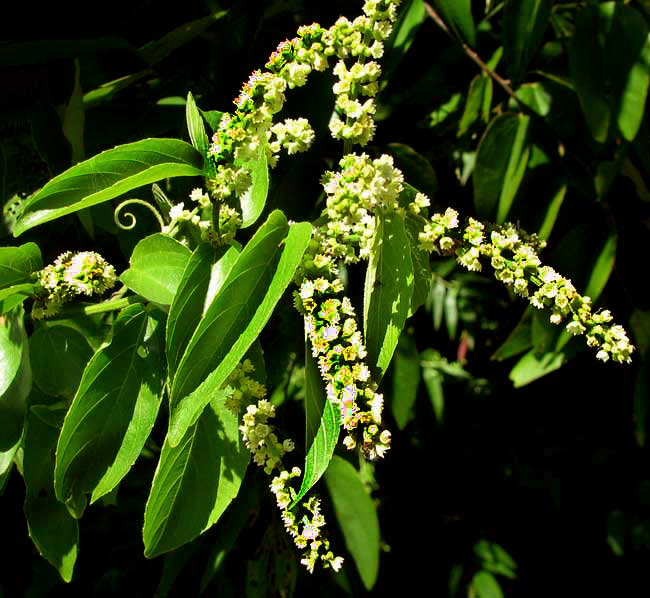
from the October 17, 2010 Newsletter issued from Hacienda Chichen Resort beside Chichén Itzá Ruins, central Yucatán, MÉXICO; limestone bedrock, elevation ~39m (~128ft), ~N20.676°, ~W88.569°
CHEWSTICK
Nowadays here and there at woods edges along roads you see a vigorous liana, or woody vine, ascending into the trees, then its limber branches cascading down toward the road, ending in finger-thick, four-inch-long (10 cm) racemes of white flowers, as shown above.
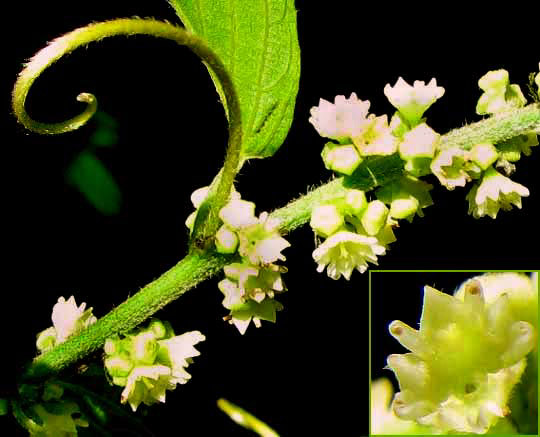
Above a close-up shows the 1/10th-inch-wide (3mm) flowers, and a feature rather peculiar for the species -- a simple tendril arising in the inflorescence, or flower head. Usually tendrils arise on stems well below inflorescences.
In Jamaica where this liana also occurs the species is called Chewstick, and books say the Yucatan Maya call it Xomak. It's GOUANIA LUPULOIDES of the Buckthorn Family, the Rhamnaceae. My Maya friends here don't seem to know about it. Sometimes it's like that, in one area people being very familiar with a plant, but then not far away it's unknown.
In the last picture you probably noticed the flowers' unusual appearance, like shallow, ten-lobed bowls. The deal is that the flowers' five sepals (calyx segments) and five petals are white, about the same length, and alternate with one another. Another curious feature is how the petals partially enwrap the stamens. Chewstick's flowers are relatively relaxed about their sex. Most blossoms bear both male and female sexual parts, but sometimes they're functionally male or female, with one set of sexual parts being reduced and sterile.
Maximino Martínez's Las Plantas Medicinales de México says that the cooked plant is used to harden the gums, and that the plant's dried stems, when ground, produce a powder that has been exported to Europe as a dentifrice. On the Wikipedia page for this species I read that "To clean one's teeth ... one cuts off a portion of the vine, peels off the bark and chews the tip. The tip becomes fibrous and frothy. Chewstick tastes slightly bitter but not unpleasant."
Elsewhere I read that a medicinal tea from the plant has a pleasant but bitter flavor and can be used as a bitter substitute for hops in ginger-beer.
Chewstick is native to a large area, from Mexico through all of Central America to northern South America, plus the West Indies.
from the January 31, 2016 Newsletter issued from Hacienda Chichen Resort beside Chichén Itzá Ruins, central Yucatán MÉXICO
CHEWSTICK FRUITING
Nowadays Chewstick is fruiting. Below, you can see the brown, branch-trip clusters of one along a weedy roadside:
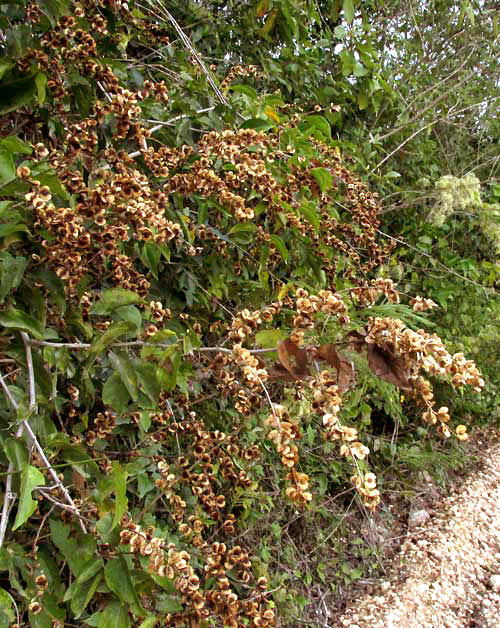
A closer look, showing leaves bug-eaten and diseased at the growing season's end, and the fruits curiously three-winged, appears below:
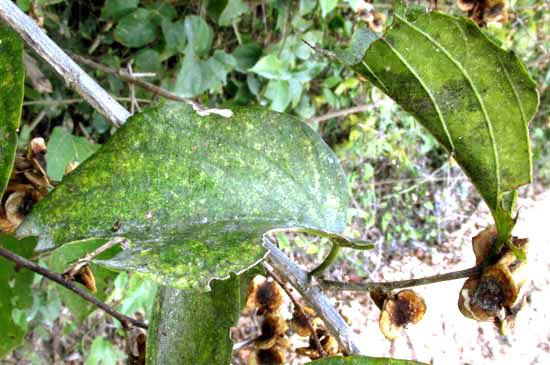
Up closer, a fruit shows interesting reticulating veins. The fruit's outward appearance is much like that of certain fruits of the Buckwheat Family, the Polygonaceae -- for example, those of the docks and sorrels, genus Rumex -- as you can see below:
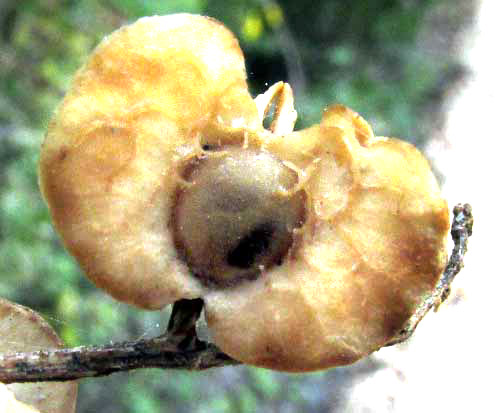
When Chewstick's fruits mature they split into three parts, each with a seed bearing two wings, with each wing consisting of one side of one of the fruit's three wings. Below, you can see what the winged seeds look like:
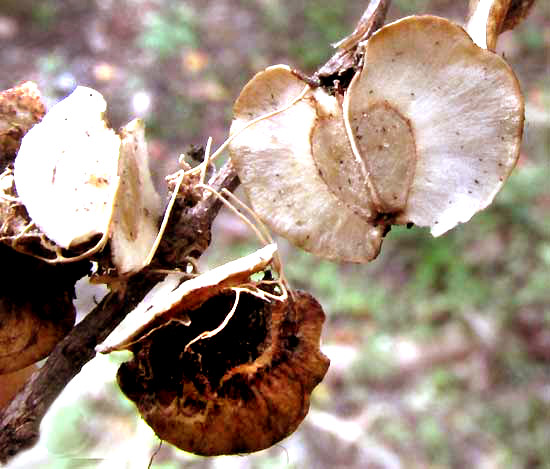
You might be interested in comparing Chewstick's fruit structure with the outwardly similar fruits of Curly Dock, in the Buckwheat Family, which we photographed back in Texas, at www.backyardnature.net/n/13/130623ry.jpg.
Though the fruits look much alike, structurally they're very different. In Curly Dock's three-winged fruit , each wing bears one seed, or grain, while each of Chewstick's seeds bears two wing-faces. Such structural differences are big deals in botany, and the Buckthorn and Buckwheat Families are not closely related. It's a matter of convergent evolution -- two unrelated plant groups coming up with the same idea of having small seeds bearing papery wings for wind dispersal.
On our Chewstick web page we mention several medicinal uses for the vine, beside the fact that Jamaicans chew the stick for cleaning their teeth. Now I see that Marianna Kunow in her 2003 book Maya Medicine: Traditional Healing in Yucatan, writes that the Maya also report using the plant for treating mouth sores, pimples, "blood vomit" and "rotten liver."
Apparently there's a market for Chewstick stems to chew on. The IslandHerbsandSpices.Com website sells 3 oz (85g) of sticks for $26.00, assuring us that Chewstick "contributes well to overall dental health by replenishing needed minerals to the teeth and fights against the acid that causes tooth decay." They offer free shipping.